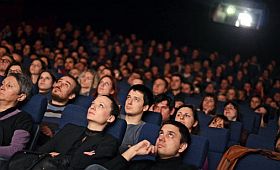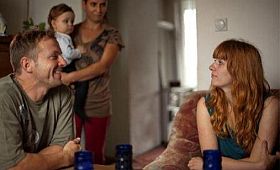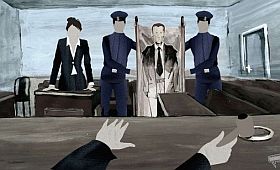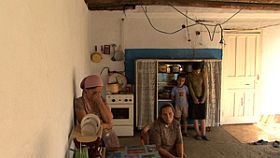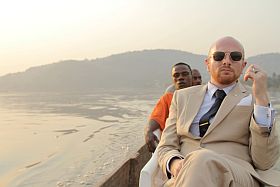


One Year After Fukushima

This came to Filmkommentaren and adresses all over the world, to us from Danish production company Magic Hour. A global online event. Respect!:
Saturday March 3rd at 7.32 am (CET) GREENPEACE marks the nuclear disaster by opening a free on-line streaming window, where the documentary INTO ETERNITY can be watched for 150 837 seconds – one second per individual who is – perhaps permanently – displaced from the Fukushima.
The multi-award winning Danish documentary INTO ETERNITY focuses on the long-term safety issues linked to nuclear energy. The film invites its audience down into what is to become the world’s first permanent storage for nuclear waste, ONKALO, which is being hewn out of solid rock in Finland. Here nuclear waste is destined to be stored for the next 100,000 years, which is the time span it remains hazardous, and consequently the time span the storage facility must function. The meltdown in Fukushima’s reactors has made it extremely difficult to remove all the nuclear fuel, and there is a risk, that Japan will end up with its own Onkalo on the surface, which will need security measures for millennia on end. These unfathomable timespans are perhaps one of the biggest problems of nuclear energy – yet hardly ever part of the debate. Our actions today have consequences far into a future, we cannot even imagine. Nuclear energy is often termed ‘the morally correct’ energy choice because it is CO₂ neutral, but the long-term ethical and existential issues are ignored. Are we in the present committing crimes against humanity in the future?
‘Fukushima was not a natural disaster, but a result of human error and mental meltdown!’ Michael Madsen says. ‘The disaster is a result of human error – or even worse – of conscious human negligence. Everybody knew, that there would be earthquakes and tsunamis in the area, and security measures had been taken – except not adequate measures.’
INTO ETERNITY has received numerous awards on festivals all over the world. In 2011 it was screened to UN ambassadors in New York leading up to the nuclear summit, and many experts have deemed the film a unique contribution to the debate about nuclear energy.
Photo: From Le Monde’s article February 28 on the planned evacuation of Tokyo.
